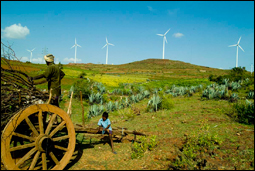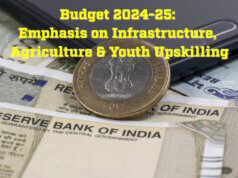
There is no single silver bullet theory to gain self-sufficiency. We need a mixed approach as we explore new resources, new technology and new investment opportunities home and abroad to light up all Indian households by the year 2022-23 and to meet our energy demand which is expected to double by 2035, says Dr. Uday Salunkhe, Group Director, Welingkar Institute of Management Development & Research.
With the strong progressive outlook that describes the new prime minister, the national sentiments have gone up. Recent announcements reaffirm. In the energy framework, Prime Minister Narendra Modi envisages to light up all the Indian households by year 2022-23; that is an additional 400 million. Working in that direction are the three key ministries of power, coal and renewables under the minister, Piyush Goyal, for a seamless functioning. Congruously, many more policy-moves have been relayed. The latest one, the approval to increase the height of the Sardar Sarovar Dam, would also give hydroelectricity to the western parts.
The picture
Spotlighting the energy sector, India with an installed capacity of 245.394 GW, April 2014, is the world’s fourth largest producer (and consumer too) after China, the US and Russia. It draws 88 per cent of it from non-renewable sources and the rest from renewables. Generation is with the Centre, State, and Private sector. NTPC, NHPC, and NPCIL are the leaders at the Centre with resources like coal, gas, nuclear, hydro and renewable energy at their disposal whereas the private players generate power from hydro, thermal, and renewable energy sources.
Roadblocks
Overdependence on fossil fuels: The state-owned Coal India Ltd with output around 462 million falls short of self-sufficiency and leads to imports. Other concerns dotting the sector include the not-so-efficient energy infrastructure, the grid fluctuations, yawning supply-demand imbalances, and loss in transmission and distribution (25 per cent). We generated around 911 billion units ((911,652 MU/911 TWh) during the 2012-13 fiscal and this year it is expected to be 963.8 billion units, highest so far. The demand is estimated to double by the year 2035. And there are off grid regions.
The road ahead
There is no single silver bullet theory to gain self-sufficiency. We have to have a mixed approach as we explore new resources, new technology and new investment opportunities home and abroad. We already have some coal assets

in Australia, Indonesia and Africa, and decent amounts of oil and gas in the Middle East and the Americas. Moreover, we have to conjure a pragmatic combination of diverse resources from diverse sources and explore new technologies to contain the wastage and boost productivity.
We have to focus on effective project management, environmental clearances, land acquisition and skilled manpower for the newer technologies. We need to attract foreign collaborations and investors with congenial policies. Indigenous production is to be streamlined. Reforms at Coal India Ltd can include faster clearances, better transportation, public-private participation, and technology adaptation through joint ventures and global collaborations. And renewables.
Renewables, the new hero
With the depleting coal deposits and rising tariffs on one hand and aggressive R&D and domestic production of critical raw materials, components and products, advance in technology, collaborations, subsidies the cost of the two, (non-renewable/renewable) on the other will soon be comparable. As of December 2013, India had an installed capacity of about 29.5 GW of renewal technologies-based electricity.
Encourage enterprise and supporting infrastructure. We need system to tap the solar in the west, wind in the southern states of Andhra Pradesh and Tamil Nadu, and hydropower from the northeast. Developments in building-integrated-solar-PV (BIPV), floating wind turbines, advanced storage technologies, alternative energy vehicles, and tidal and wave power need to be monitored and pilot-tested. Smaller power stations attached to wind and solar might be easier in the off grid hinterlands giving a spur to the development.
The National Solar Mission has target of deploying 20,000 MW of grid connected solar power by 2022. We have huge prospects in wind and solar which can be further enhanced, manifold. As of March 31, 2014, the installed capacity of wind power in India was 21,136.3 MW which is estimated to grow further by 6,000 MW this year. It generates 1.6 per cent of the country’s power.
Besides, renewables have lot more in their favour. Big businesses are divesting in coal stocks and putting their stakes in renewables. These are easy to put up with smaller gestation periods. Also, government is supporting them with policies. Foreign investors find the sector a good investment.
Definitely, renewables hold a lot of potential.
Newer technologies
Newer technologies, research and international cooperation have to be roped in to bring the alternative sources of energy into mainstream. Foreign investors are ready to invest in the Indian renewable energy sector.
Under one similar initiative, Indo Sweden Innovation Accelerator Programme, we invited innovative companies from the renewables sector to work in collaborations with their Indian counterparts in India. The idea has been shaping up pretty brilliantly as 11 of them are in talks with some 40 of Indian players to work together in India. The constituents of the set-up are working to decipher the gaps in the sector and conjure models to plug in the gaps.
Global markets
Also, the leadership has to streamline the liquefied natural gas terminals ready to receive gas from the global market which further have to be linked to power stations and the grid. Russia can offer us new markets for energy, particularly oil and gas, considering the rapport we share. China may also be a good option but then there can be political issues or rivalry. Vietnam, exploring for oil in the South China Sea waters, can be a good partner but it may not go down very well with China.
Chalking up energy-for-all seems to be a pretty reachable target. Renewables, technology and government support via policies and bureaucracy will be the major players. It is hard to underestimate its role (energy); it has a cascading effect as it spurs growth and industry. No gainsaying, it underlies all economic development.












So, with about 10% of installed capacity, wind mills are contributing just 1.6% of the units produced ! What is more, this is from the best wind mills sites. The new sites are having lower wind velocity. Meaning new wind mills being installed are going to produce much lower !
With Solar, the generation is still worse.
Yet, the author wants the Wind / Solar to play an active role in electricity generation for India !
For a better understanding of the subject, please read :
https://www.slideshare.net/PeriasamyKandasamy/energy-options-for-india